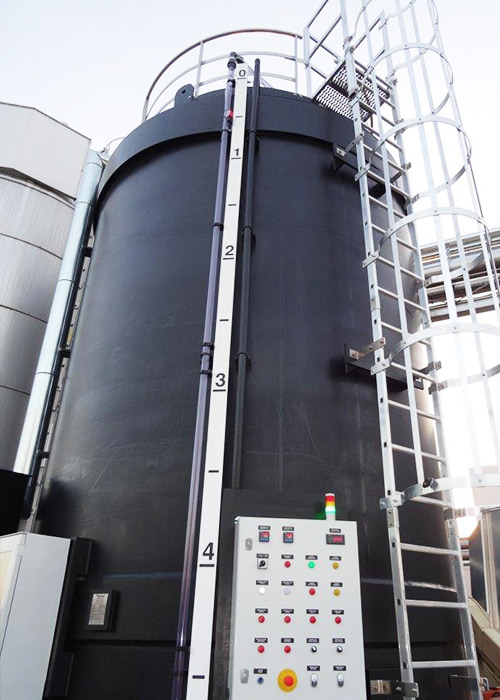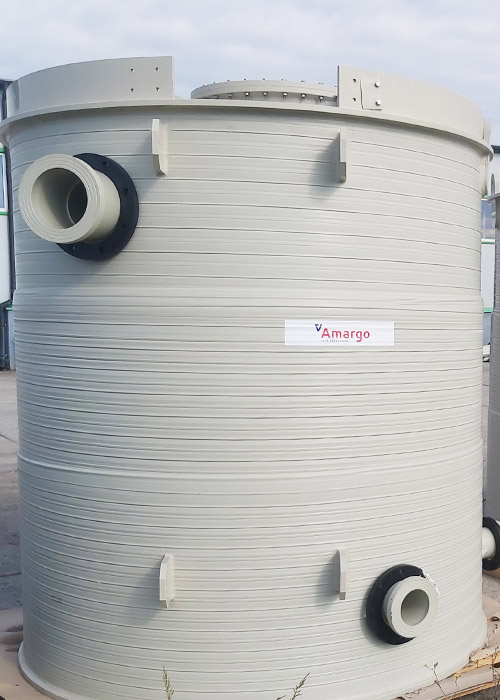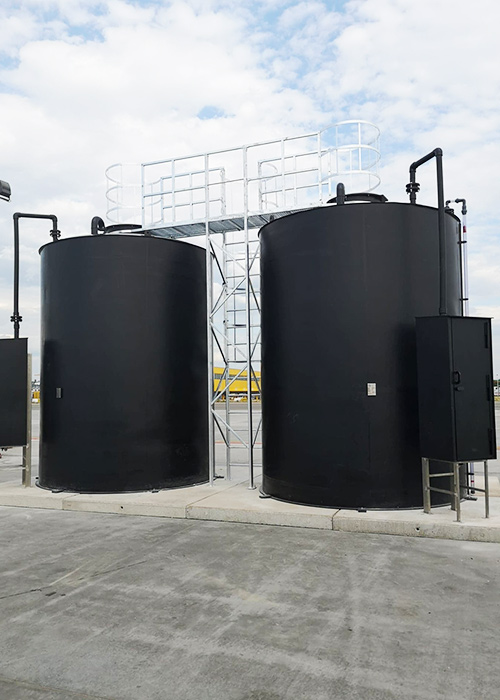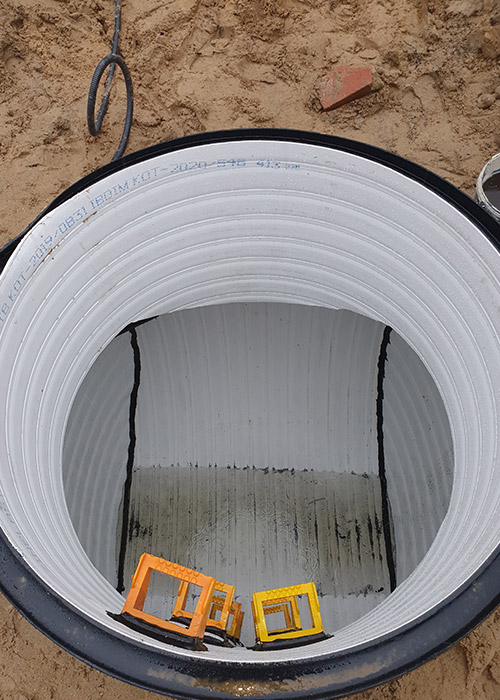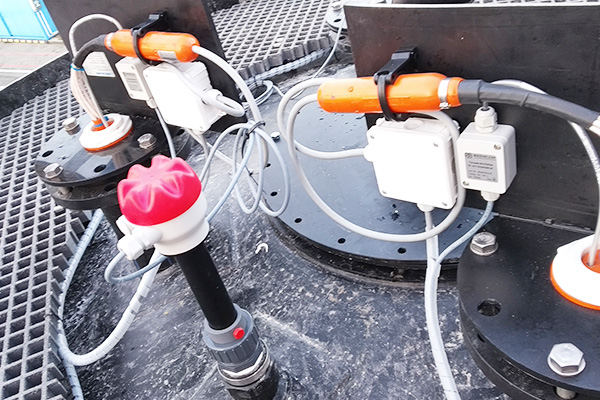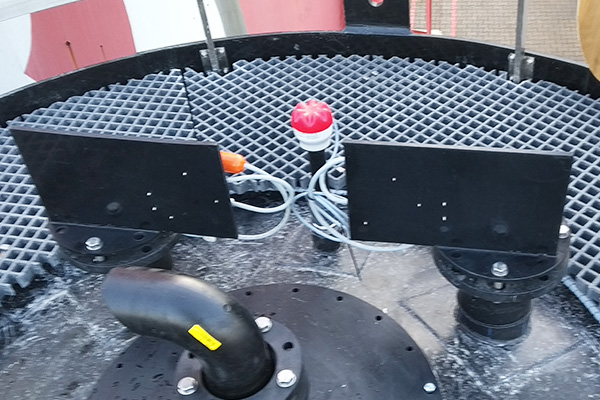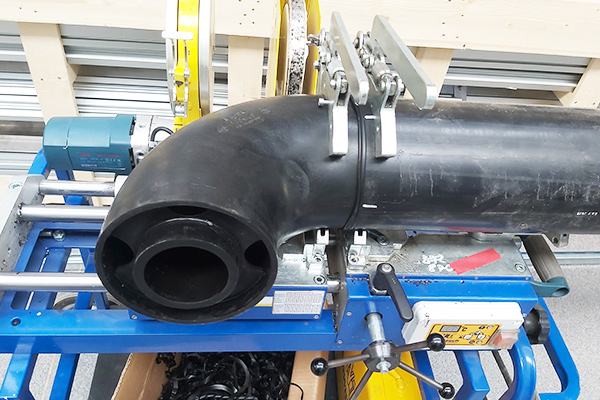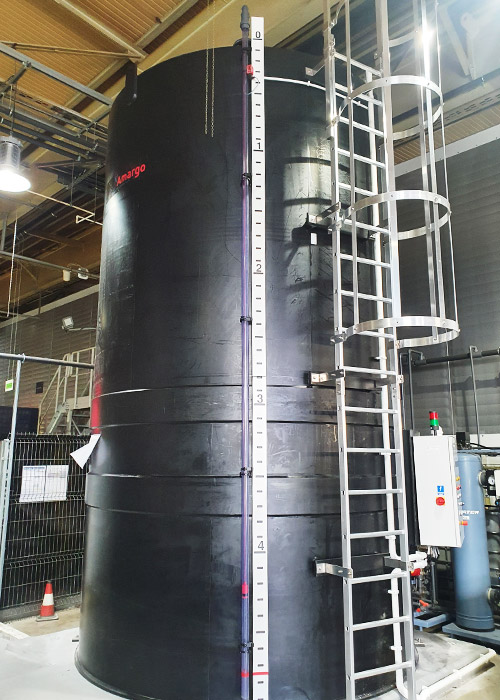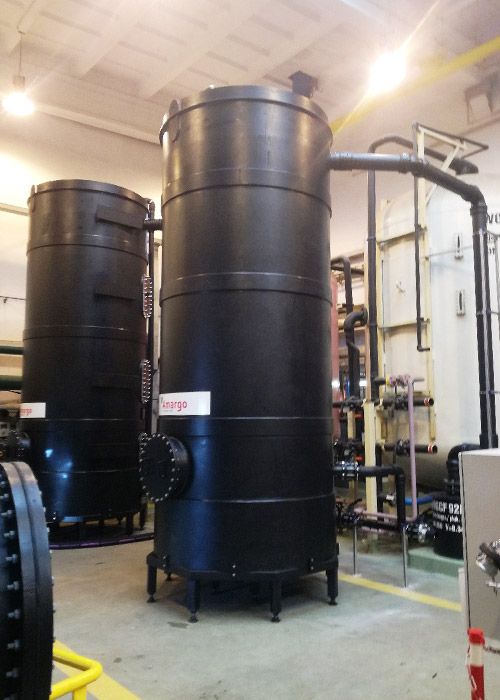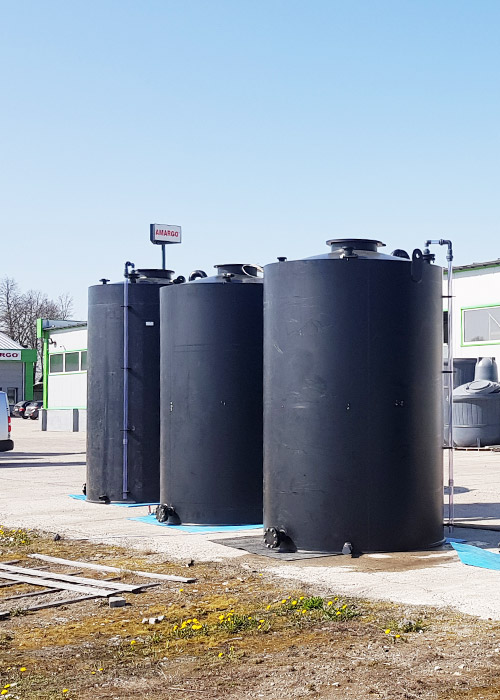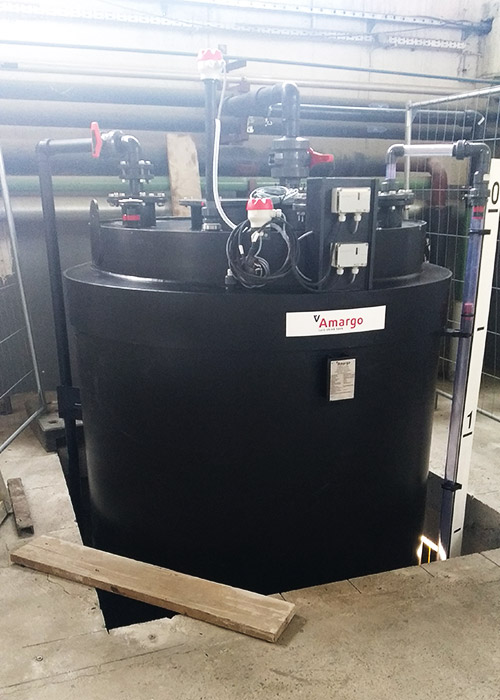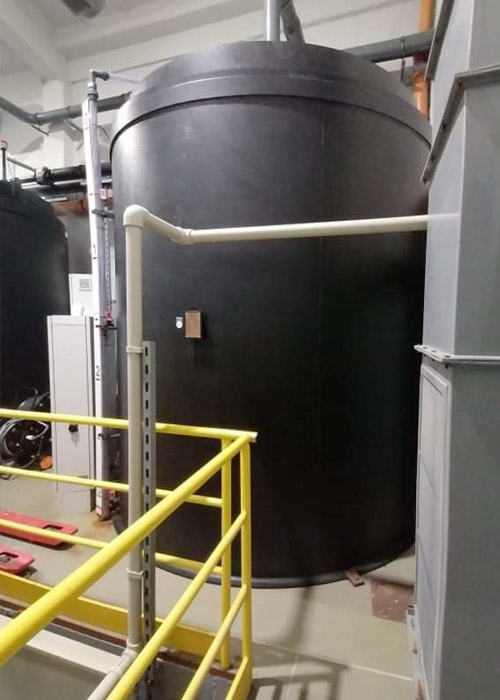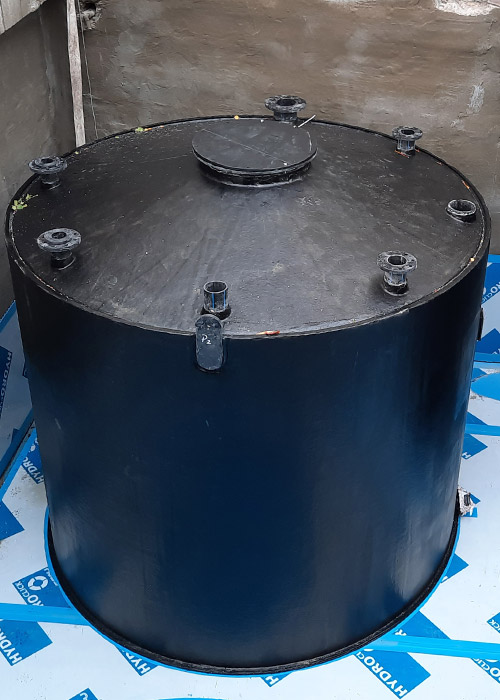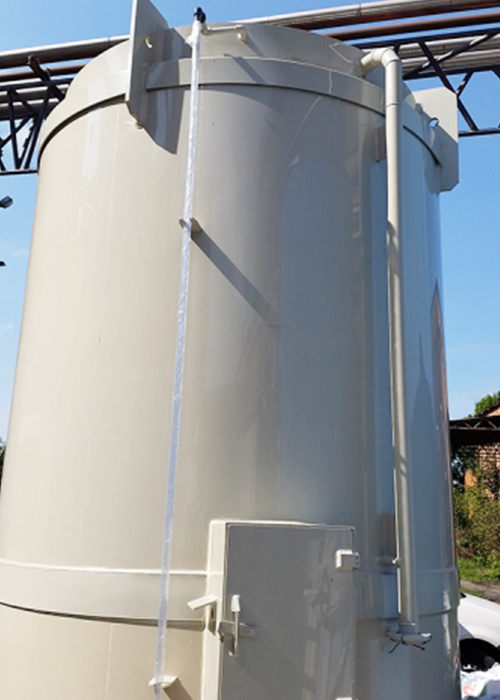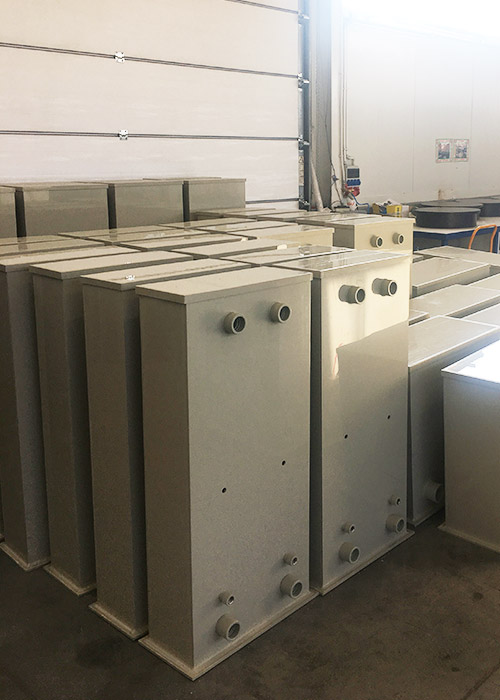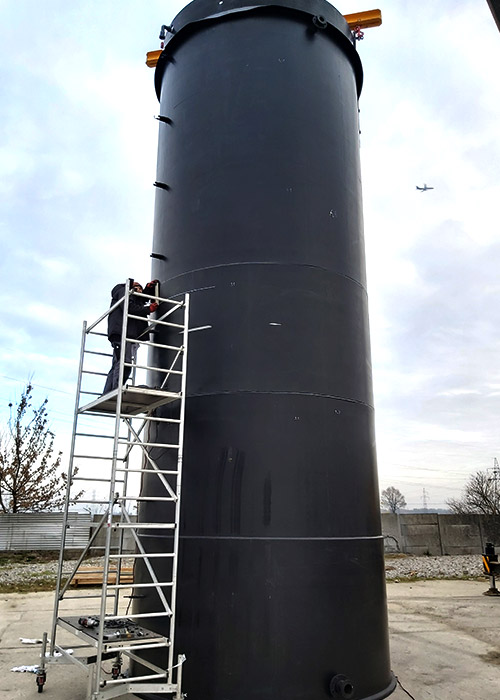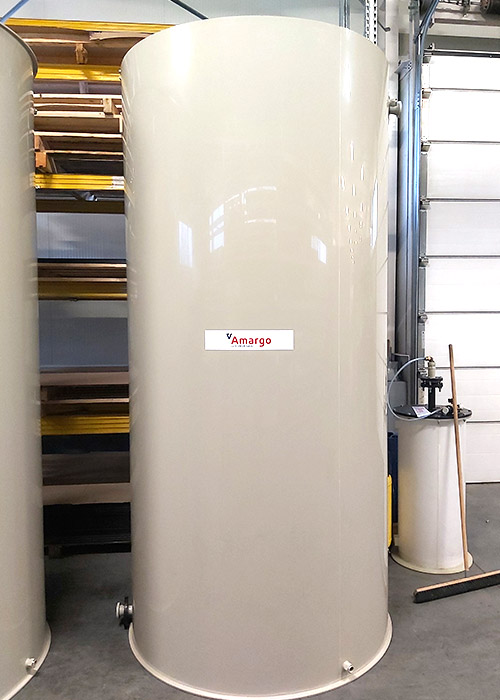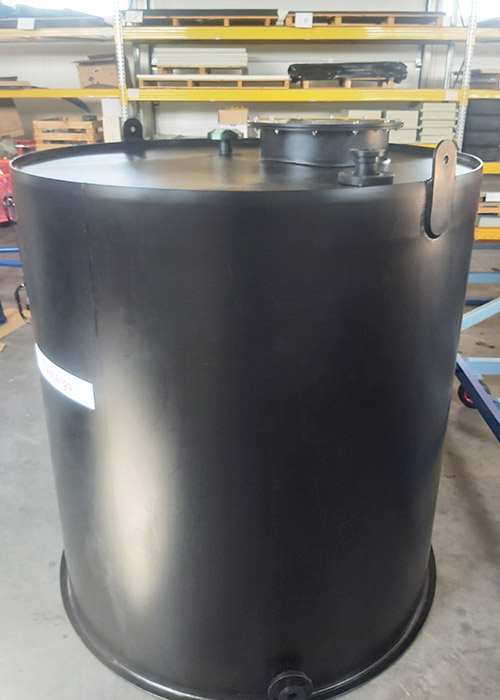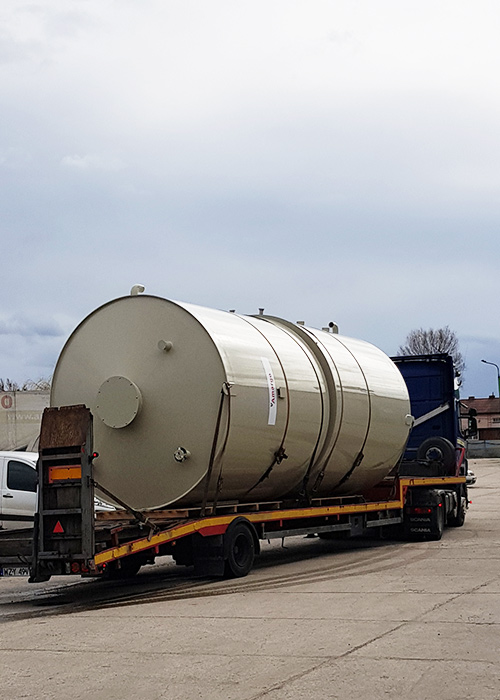Chemical resistant tanks
We manufacture high quality surface chemical resistant plastic tanks ensuring safe storage of corrosive materials and guaranteeing the reliability of conducted processes:
- chemical resistant storage tanks for chemicals, subject to UDT inspection,
- chemical resistant process tanks used for product processing within production lines,
- chemical resistant tanks for other applications (tanks in this group are not subject to UDT inspection).
Tanks subject to inspection
According to the Regulation of the Council of Ministers of 7 December 2012 [1], issued on the basis of Article 5(2) of the Act of 21 December 2000 [2], the following devices from the group of non-pressure equipment are subject to technical supervision:
- non-pressure and low-pressure tanks designed for the storage of flammable liquids,
- non-pressure and low-pressure tanks designed for the storage of toxic or corrosive materials.
In each such case, we fully take over the formal issues related to supervision procedures and obtain approval for the engineering documentation from the UDT unit.
In accordance with § 64 item 5 of the Regulation of the Minister of Economy of 16 April 2002 [3], in technically justified cases, when the tank material is very resistant to the working medium and preparation of the tank for testing is difficult or the tank has double walls and a leakage monitoring system, the competent technical supervision body may extend the time between internal inspections or leakage tests or agree to apply other testing. An internal inspection should be conducted no less frequently than every 10 years. For painted steel tanks, this period is half of the above.
[1] Regulation of the Council of Ministers of 7 December 2012 on types of technical equipment subject to technical supervision, Dz.U. 2012, item 1468; hereinafter: Regulation on types of technical equipment.
[2] Act of 21 December 2000 on technical supervision, i.e., Dz.U. 2019, item 667.
[3] Regulation of the Minister of Economy of 16 April 2002 on the technical conditions of technical supervision to be met by non-pressure and low-pressure vessels intended for storing toxic or corrosive materials, Dz.U. 2002, No. 63, item 572,; hereinafter: Regulation on the technical conditions of technical supervision.
Construction variants
- butt welding and/or extrusion welding of thermoplastics according to DVS standards
- filament winding technology
- filament winding method or step-by-step hand lamination (for composites)
| Design variants |
| a) vertical b) horizontal c) cylindrical d) rectangular e) custom |
| Roof variants |
| a) flat roof b) conical roof |
| Bottom variants |
| a) flat bottom b) slanted bottom c) conical bottom d) raised bottom |
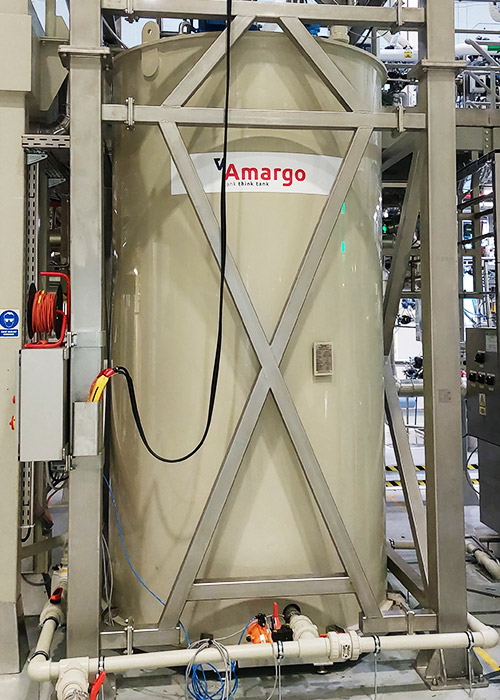
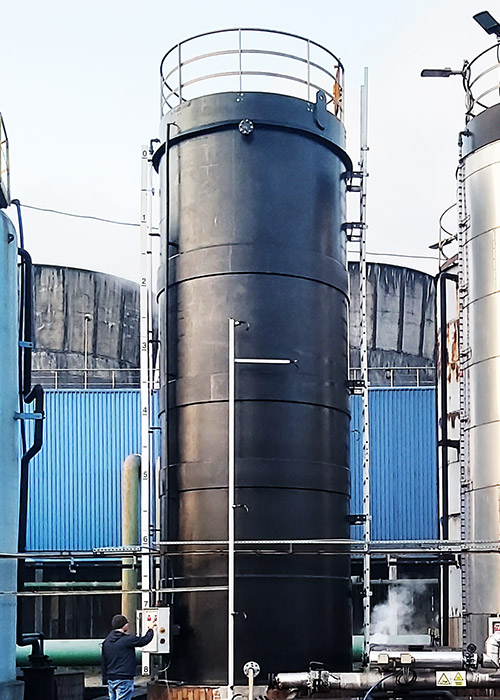
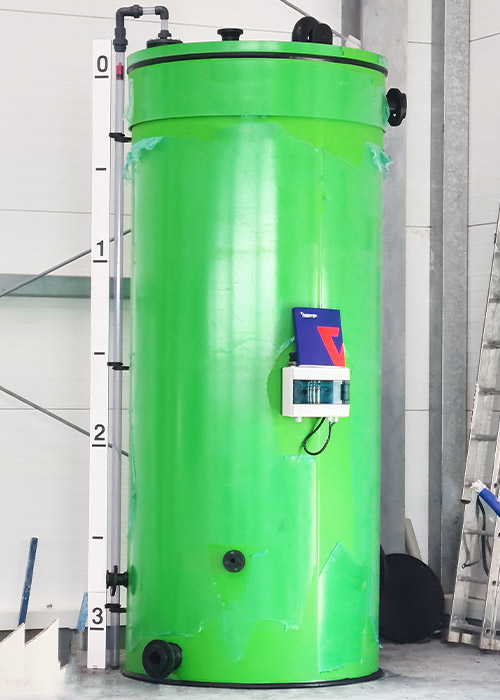

Economical range of tank dimensions
- diameter/width: 0.6-3.2 m (for economical transport)
- diameter/width: 4.5-5.5 m (special transport with a pilot must be ordered, which results in additional cost)
- height/length: 0.5-10 m (max. 13 m) – generally approx. 8 m
Tank protection against substance leakage
In case of chemical resistant tanks, which work with corrosive and hazardous substances, we use additional protection to protect the production environment and the environment from leakage of the medium as a result of unsealing.
We equip tanks with liquid level indicators (non-contact measurement probes: ultrasound or radar with signal retransmission option and float level gauges) and overfill sensors in accordance with the requirements of the UDT Office of Technical Inspection, we also select technically and economically sound protection solutions, such as:
- a second wall in the tank structure, acting as a spillage container (so-called bunded tank),
- shell with leakage monitoring system,
- tank in the protection and spillage container – thanks to this protection, the floors of production halls and drainage drains are protected.

Post-production procedures
Once a chemical resistant tank is manufactured, it undergoes rigorous quality control by Amargo’s qualified personnel.
This control includes:
- leakage tests by sparking and/or filling,
- evaluation of conformity with the technical documentation,
- ultrasonic tests or X-rays of welds.
Tank accessories
Depending on the type of stored or processed substance or mixture of chemical compounds, we equip the tank with necessary fittings and various installation components that are selected individually, depending on the purpose of the tank and the client’s needs. In the table below you will find a summary of the equipment – both standard, which are ports in the appropriate configuration, hatches, sensors, as well as additional, such as heating systems.
| Tank components |
| a) Roof hatches, side hatches, sight glasses b) Necessary ports (inlet/outlet, connectors, etc.) c) Ladders, service platforms, gangways, gratings, railings, lighting, signage d) Ground fixing systems, wind protection |
| Safety fittings |
| a) Liquid level indicators (non-contact measurement probes: ultrasonic or radar with signal retransmission option and float level gauges) b) Overfill and leakage sensors according to UDT requirements c) Flow measurement elements d) Heating systems in the form of chemical resistant heaters or surface heating (redundant systems if necessary) e) Automatic control, measurement and control systems (control cabinets, actuators, throttles, valves) |
| Components of associated installations |
| a) Piping (transfer, dosing, mixing) b) Draining of vapours and gases – for draining toxic and corrosive vapours from the tank we use chemical resistant ducts made of resistant materials (such as PVC, polyethylene, polypropylene, flame retardant polypropylene PPs or materials allowing removal of static electricity – PE-EL or PPs-EL) c) Dosing pumps, mixers, wave breakers d) Feeders and hoppers for bulk products e) Suction pumps: automatic/manual |
Plastics used
For the production of chemical resistant tanks we mostly use PE100, PE100 RC, PP-H, PP-C, PVC, PVC-U, PVC-C, PVDF, E-CTFE, PFA plastics, as well as GRP/TWS/FRP resins – polyester and vinyl ester composite structures and hybrid composite structures: chemical resistant liner and glass composite structural wall.
HOMOGENEOUS WALL TANKS (welded from extruded sheets or tubes using stress-free filament winding technology – extruded plastic web: solid wall/structural)
- PE High Density UV (PE-HD, HDPE) – high density polyethylene, used for example in the manufacture of caustic soda storage tanks
- PE100 RC – polyethylene characterised by high resistance to impact loads and extraordinary resistance to slow propagation of cracks (according to ISO 13479 8760 h vs. >1000 h for HDPE)
- polypropylene homopolymer PP-H (good chemical resistance to most organic compounds)
- polypropylene copolymer PP-C (increased impact strength even at lower temperatures, range of use from -20 to +80°C)
- polyvinyl chloride (also used as an insert for a tank made of another material) type PVC-U or PVC-C
LAYERED TANKS
- PEHD outer wall, PVC insert
- PEHD outer wall, PVDF/E-CTFE insert – for cost reasons they are used in low thicknesses as liners, e.g., from 2-3 to max. 4 mm
COMPOSITE TANKS
- glass fibre reinforced chemical resistant resins (GRP, FRP, GRP):
a) resin system covered with a finishing layer
b) multi-layer structures, e.g., inner liner made of PE, PP, PVC, PVDF, E-CTFE, PFA (providing extremely high chemical and temperature resistance) + as a composite structure with high corrosion and chemical resistance
